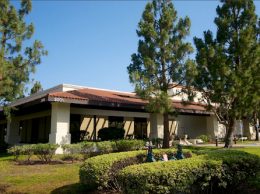
Tony Biasotti
By Tony Biasotti
In May, the Ventura County Civic Alliance will release its 2017 State of the Region report. As in past editions of the report, the state of the county’s economy is a large part of the overall state of the region.
The state of the economy is decidedly mixed. Ventura County is what it has been since the recession ended, only more so. The economy is growing, but it is growing in a way that should raise real concerns over Ventura County’s cost of living and inequality.
Some of the news is quite good. Ventura County’s gross county product has grown every year since 2009, and the unemployment rate is now at pre-recession levels. Overall economic growth has been slow and steady.
But scratch below the surface of the data, and there are some troubling indicators. Job growth in particular has been a weakness, especially when compared to Ventura County’s neighbors. The county’s combination of slow job growth and a high cost of living gave it the dubious distinction of being one of a handful of California counties mentioned by name in “The Rise of Underemployment,” a working paper released last month by the Federal Reserve Bank of San Francisco.
Between 2006 and 2010, Ventura County shed more than 23,000 jobs, or around 8 percent of its non-farm workforce. It took the county more than a decade to return to its pre-recession job total; in 2017, the county is projected to barely top the number of non-farm jobs it had in 2006. By contrast, Santa Barbara County topped its pre-recession job total in 2013.
The types of jobs that Ventura County is creating are different from the ones it created in the past. They are more likely to provide services than produce goods and, in many cases, they are more likely to be in low-paying service sectors. Retail jobs, for example, are well above their pre-recession peak, while professional services jobs are below theirs.
The biggest private sector employers in Ventura County, such as Amgen, can no longer be counted on to provide an ever-growing number of jobs. And the county’s startup culture isn’t sufficient to allow numerous small companies to fill the gaps left by cutbacks at a few big employers.
The private sector as a whole still employs fewer people than it did a decade ago. Government agencies, including school districts and public health care providers, have picked up much of the slack. These are generally good jobs, ones that allow people to afford a home in Ventura County. But that, too, is changing.
In 2016, the median Ventura County home sold for $535,000, the highest price since 2007. The housing affordability index was 30 percent, which means that only 30 percent of the county’s households could afford to buy the median-priced home. Rents are on the rise as well.
There is still little political support for significant increases in the supply of housing. Countywide, local governments issued permits to build 758 new homes in 2015, the last year for which complete data was available. That falls far short of what would be necessary to keep up with Ventura County’s modest population growth. There were more than 4,000 new housing starts in 2005, a number that was clearly unsustainably high. The new normal, though, appears unsustainably low.
There’s much more to the State of the Region report than economic and real estate data. It has 10 chapters, or domains, covering agriculture, the environment, education, public safety and more. There are 75 statistical measures of life in Ventura County, six of them new to the 2017 edition.
The State of the Region is one of the chief projects of the Ventura County Civic Alliance, a nonprofit, nonpartisan coalition devoted to creating civic dialogue around Ventura County’s quality of life. As it was in 2013 and 2015, the research for the State of the Region was conducted by a team from California Lutheran University, led by economics professor Jamshid Damooei.
The 2017 State of the Region report will be released at a breakfast event at California Lutheran University on May 10. Three weeks later, on May 31, it will be presented again at an afternoon reception at the Ventura County Community Foundation Nonprofit Center in Camarillo. Tickets are $50 for Civic Alliance members and $75 for non-members, and include a copy of the report. To purchase tickets or join the Civic Alliance, visit www.CivicAlliance.org.
• Tony Biasotti is a writer living in Ventura and author of the 2017 State of the Region report. He is a former staff member of the Business Times.






 Print
Print Email
Email

















